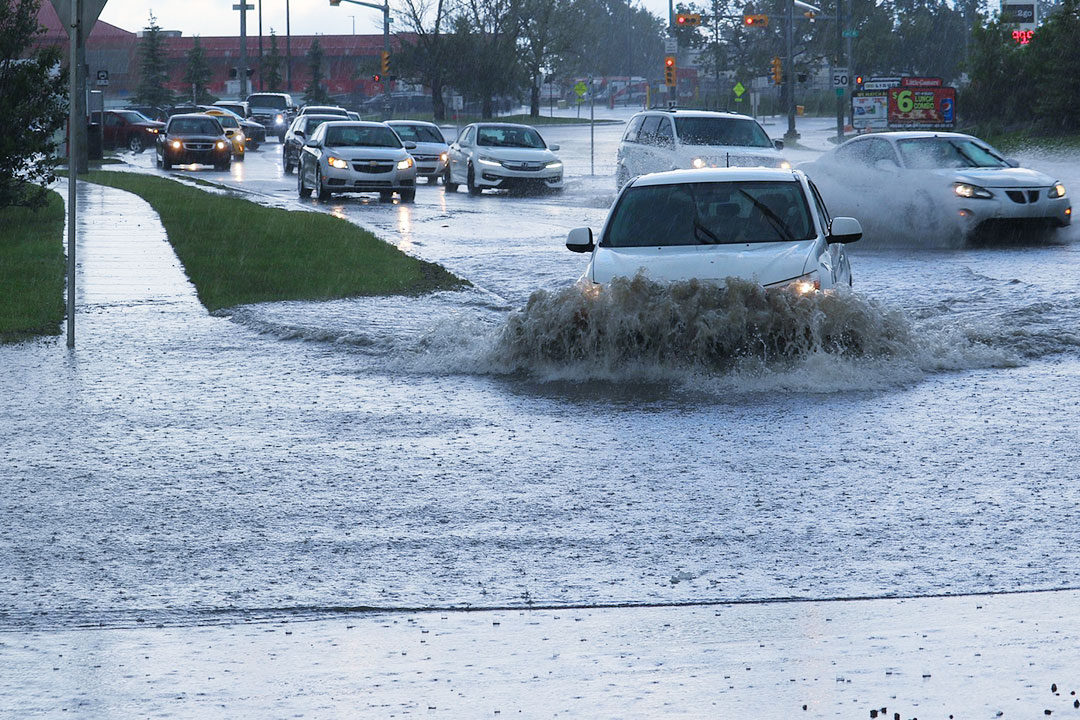Flash Flood Emergency: Signs, Safety, And Survival

Table of Contents
Recognizing the Signs of an Impending Flash Flood
Flash flood warnings are often issued with little lead time, making immediate recognition of potential threats essential. Being aware of the warning signs can significantly increase your chances of survival.
Sudden Heavy Rainfall
Flash floods often occur with little to no warning, frequently following intense, localized downpours. These downpours can saturate the ground quickly, overwhelming drainage systems and causing water to rise rapidly.
- Pay attention to weather forecasts and warnings: Stay informed about weather conditions, especially during periods of heavy rainfall. Utilize weather apps, local news, and official weather service alerts.
- Monitor rainfall intensity – especially in areas with poor drainage: Areas with inadequate drainage systems are particularly vulnerable to flash floods. Observe the rate at which rainfall accumulates and note any signs of ponding water.
- Be aware of the potential for flash floods even after a relatively short period of heavy rain: Even a seemingly brief period of intense rainfall can trigger a flash flood, especially in mountainous or urban areas with limited drainage.
Rapid Water Rise
A dramatic increase in water levels in streams, rivers, or normally dry washes is a major warning sign. This rapid rise indicates that the water flow is exceeding the capacity of the drainage system.
- Observe water levels near your home or during outdoor activities: Regularly check water levels near your property, especially if you live in a flood-prone area. If you're outdoors, be mindful of water levels in streams and rivers.
- Note changes in water speed and color (murky water indicates increased sediment): Rapidly flowing water, especially if it's brown or murky, signals increased sediment and debris, a common characteristic of flash floods.
- Listen for unusual gurgling or roaring sounds from water sources: Unusual noises from normally quiet water sources can indicate increased water flow and an imminent flash flood.
Other Warning Signs
Don't overlook other indicators that a flash flood might be imminent. Multiple warning signs often occur together, increasing the urgency of taking action.
- Official warnings from emergency services (via radio, TV, or mobile alerts): Heed any official warnings issued by emergency management agencies or weather services. These warnings should be taken seriously and acted upon immediately.
- Reports of flooding from neighbors or local news: If neighbors or local news reports indicate flooding upstream or in nearby areas, be prepared for the potential of a flash flood affecting your location.
- Rapidly increasing water flow in ditches and culverts: Increased water flow in drainage infrastructure such as ditches and culverts indicates that the drainage system is overwhelmed and flooding may be imminent.
Staying Safe During a Flash Flood
Your actions during a flash flood can be the difference between life and death. Prioritizing safety and following established guidelines are crucial.
Evacuate Immediately
If you receive a flash flood warning, evacuate immediately to higher ground. Don't wait for the floodwaters to approach your location.
- Follow evacuation routes specified by authorities: Authorities will often designate specific evacuation routes to ensure safe and efficient movement to higher ground.
- Don't delay – time is crucial in flash flood situations: Flash floods can develop rapidly, leaving little time to react. Immediate action is necessary to ensure safety.
- Take essential documents and medications with you: In case of evacuation, ensure you have important documents and medications readily available and easily transportable.
Seek Higher Ground
If evacuation isn't possible, move to the highest level of your building or find higher ground if outdoors. Stay away from floodwaters at all costs.
- Avoid basements and ground floors: Basements and ground floors are particularly vulnerable to flooding and should be avoided during a flash flood.
- Stay away from floodwaters – they are often contaminated and contain debris: Floodwaters are dangerous and often contaminated with sewage, chemicals, and debris. Avoid contact at all costs.
- If trapped in a vehicle, abandon it and seek higher ground immediately: Vehicles are easily swept away by flash floodwaters. Escape the vehicle and seek higher ground immediately.
Protect Yourself
Take measures to safeguard yourself and your property during a flash flood. Securing your possessions and protecting yourself from harm is paramount.
- Move valuable items to upper floors or secure them: Move important items to upper floors or secure them to prevent damage from floodwaters.
- Turn off utilities (gas, electricity) if safe to do so: Turn off gas and electricity if it's safe to do so to prevent further damage or hazards.
- If trapped, find a sturdy object to hold onto: If you are trapped, find a sturdy object to hold onto to protect yourself from being swept away.
Flash Flood Survival Strategies
Preparation and a well-defined plan significantly enhance your chances of survival during and after a flash flood.
Post-Flood Safety
Once the floodwaters recede, there are still dangers. Exercise caution and take necessary precautions.
- Avoid floodwaters – they may be contaminated: Floodwaters can remain contaminated long after the flood recedes. Avoid contact.
- Be cautious of downed power lines: Downed power lines present a significant electrocution hazard. Avoid contact.
- Report damage to authorities: Report any damage to your property or infrastructure to the relevant authorities.
Emergency Kit
Prepare a flash flood emergency kit containing essential supplies. Having these supplies readily available can make a significant difference in a flash flood situation.
- Water, non-perishable food, first-aid kit: Stock up on enough water and non-perishable food for several days.
- Flashlight, radio, extra batteries: Ensure you have reliable light sources and a way to stay informed of emergency updates.
- Important documents in waterproof containers: Keep crucial documents safe and dry in waterproof containers.
Develop a Family Emergency Plan
A well-defined plan can be the difference between survival and chaos. Regularly practicing your plan increases the likelihood of success.
- Establish designated meeting points: Designate meeting points in case family members become separated during a flash flood.
- Practice evacuation drills regularly: Regularly practice evacuation drills to prepare for a flash flood emergency.
- Keep emergency contact information readily available: Keep emergency contact information readily accessible to all family members.
Conclusion
Flash floods are unpredictable and dangerous. Understanding the signs of an impending flash flood, implementing safety measures, and having a robust survival plan are critical for protecting yourself and your family. By following the guidelines outlined above, you can significantly reduce your risk and improve your chances of surviving a flash flood emergency. Remember, being prepared is your best defense against a flash flood. Stay informed, stay safe, and develop your own comprehensive flash flood preparedness plan today.

Featured Posts
-
 Myrtle Beach Disputes Most Unsafe Beach Ranking
May 25, 2025
Myrtle Beach Disputes Most Unsafe Beach Ranking
May 25, 2025 -
 Naomi Kempbell Pokazala Povzroslevshikh Detey Slukhi O Romane S Millionerom Nabirayut Oboroty
May 25, 2025
Naomi Kempbell Pokazala Povzroslevshikh Detey Slukhi O Romane S Millionerom Nabirayut Oboroty
May 25, 2025 -
 The Kyle Walker Situation New Details Emerge After Partners Flight
May 25, 2025
The Kyle Walker Situation New Details Emerge After Partners Flight
May 25, 2025 -
 Massachusetts Gun Trafficking Ring Dismantled 18 Brazilians Charged 100 Firearms Confiscated
May 25, 2025
Massachusetts Gun Trafficking Ring Dismantled 18 Brazilians Charged 100 Firearms Confiscated
May 25, 2025 -
 Myrtle Beach Hit And Run Arrest Made In Deadly Crash
May 25, 2025
Myrtle Beach Hit And Run Arrest Made In Deadly Crash
May 25, 2025
